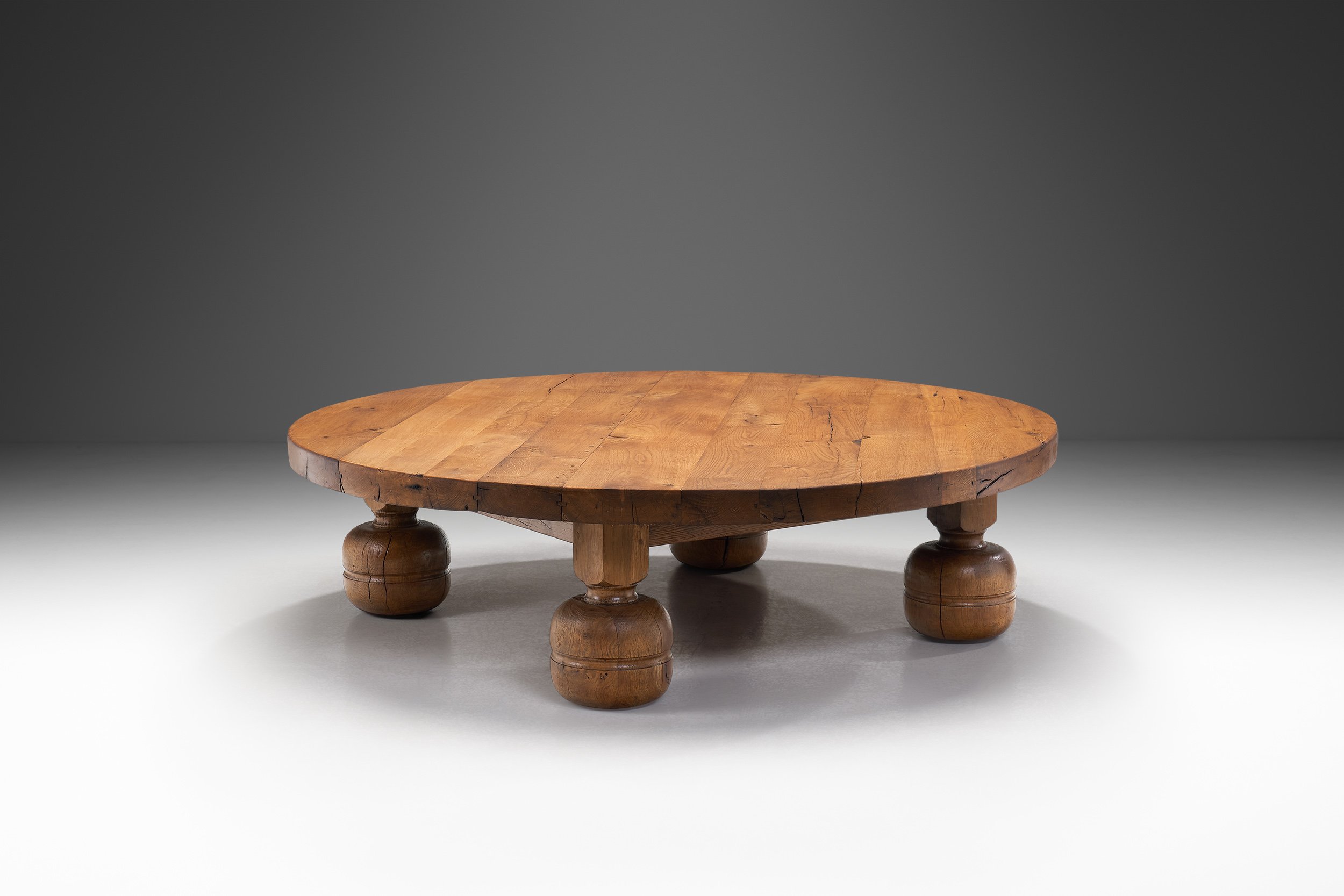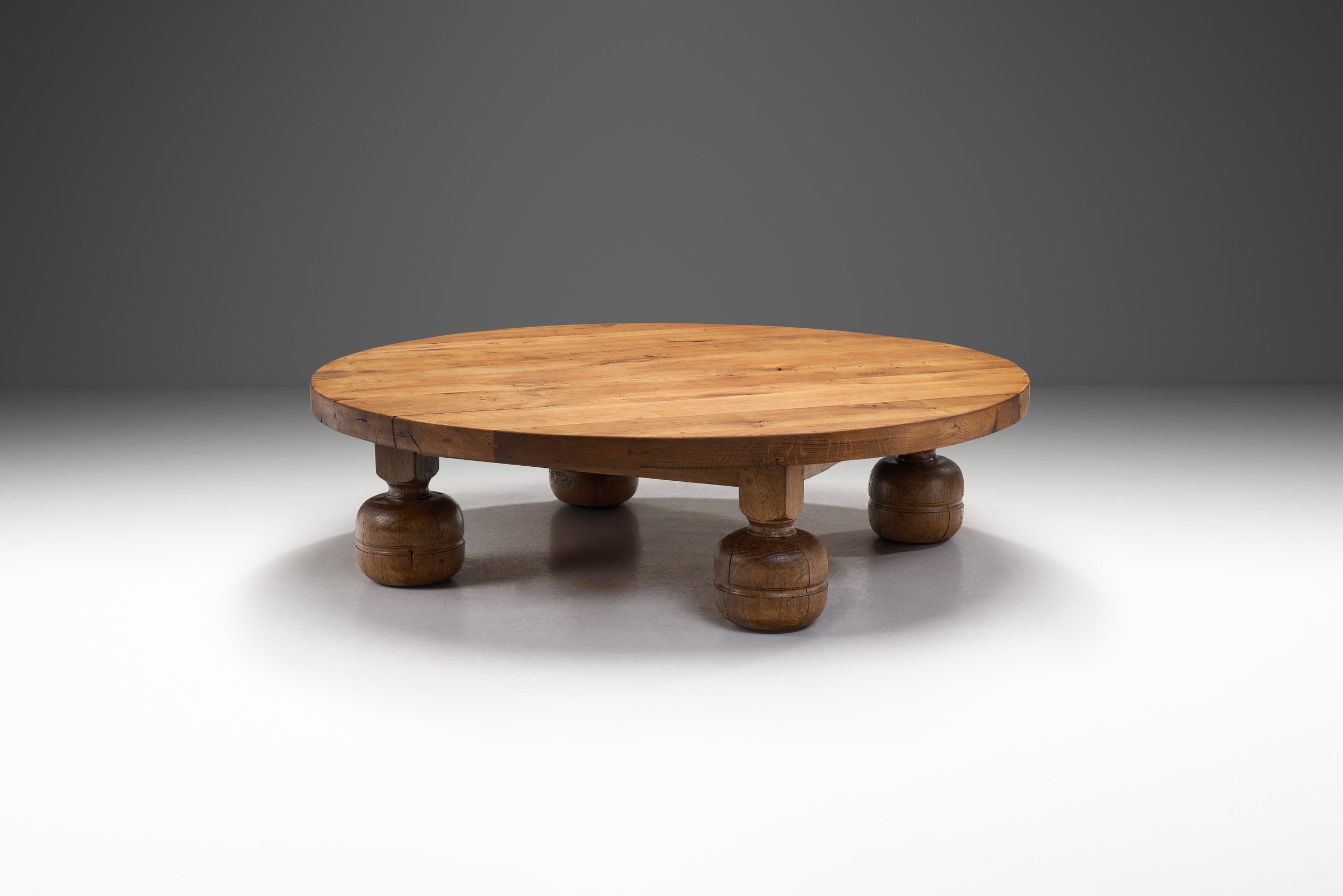Finn Juhl Coffee Table for Anton Kildeberg, Denmark 1960s (sold)






















Finn Juhl Coffee Table for Anton Kildeberg, Denmark 1960s (sold)
This rare Finn Juhl coffee table reflects the pioneering Danish master’s design universe, which centers around constant surprises in terms of shapes, aesthetics and unique design details.
In the case of this table, the most distinctive elements are the folding leaves, the dowel magazine rack and the brass “shoes”. The beech body and teak top emphasize the natural beauty of the wooden material, which is an important design principal of Juhl’s. Contrary to his modernist contemporaries, with their streamlined, scaffolding-like structures, Juhl aimed at a more organic, natural form. He translated his ideas into daring, supple joinery where each element of the design flowed seamlessly into each other, which is most visible in the dowel rack and the folding leaves of this table. The joinery beautifully shows off the craft of the quality Danish furniture manufacturer, Anton Kildeberg. This table has visual lightness, while keeping functionality and quality in the focus.
With its extendable top and rack that can hold magazines or books, this table is a great representation of Finn Juhl’s innovative mid-century design and Kildeberg’s master craftsmanship.
SOLD
Condition:
In good vintage condition. Wear consistent with age and use.
Dimensions:
28.46 in W (folded) / 49.13 in W (unfolded) x 18.89 in D x 24.01 in H
72,3 cm W (folded) / 124,8 cm W (unfolded) x 48 cm D x 61 cm H
Literature:
Per H. Hansen. “Finn Juhl Og Hans Hus”, 2009, p. 51.
About the designer:
Finn Juhl was born in Frederiksberg, Denmark in 1912. Initially, Juhl wanted to become an art historian. From his early years, he had been interested in fine arts. However, his father wouldn't allow a career in the arts. Instead Finn Juhl enrolled at the Department of architecture at the Royal Academy of Arts in Copenhagen.
Finn Juhl began his studies in the 1930s, which was an important period in furniture design, when modern design started to emerge. While he was still a student, Finn Juhl started working with the prominent Danish architect Vilhelm Lauritzen in 1934. At his studio, he worked on major projects such as the Danish Broadcasting House and Copenhagen Airport. Finn Juhl was kept so busy, that he never finished his studies. Despite this, he received the honour of becoming a member of the Academic Architect Society in 1942, and later in life, he became a visiting professor at the Institute of Design in Chicago. At the time when he had made himself a name as a furniture designer, he would always speak of himself as being self-taught.
One of the international highlights of Juhl’s career was designing the complete interior of the Trusteeship Council Chamber at the UN headquarters in New York between 1951 and 1952. Rather than thinking in terms of practical construction, Finn Juhl had the mind-set of a sculptor, when he shaped a piece of furniture. In the 1940s and 1950s, this way of working had never been seen before. His ambition was to design furniture with movement and life. Juhl took pride in making both the structurally supportive elements of the furniture and the seated person look as though they are floating. “Art has always been my main source of inspiration. I am fascinated by shapes which defy gravity and create visual lightness.” - Finn Juhl
In creating his furniture, Finn Juhl worked with two elements: The carrying element, and the carried. He eventually became known for his special ability to separate the bearing parts from the borne. This is one of many examples of how he broke free from conventional working methods and found his inspiration in art. ~H.














